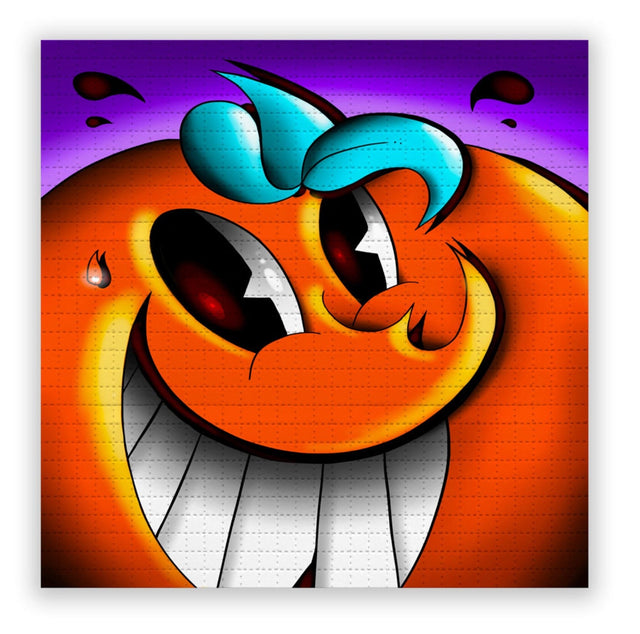
Orange
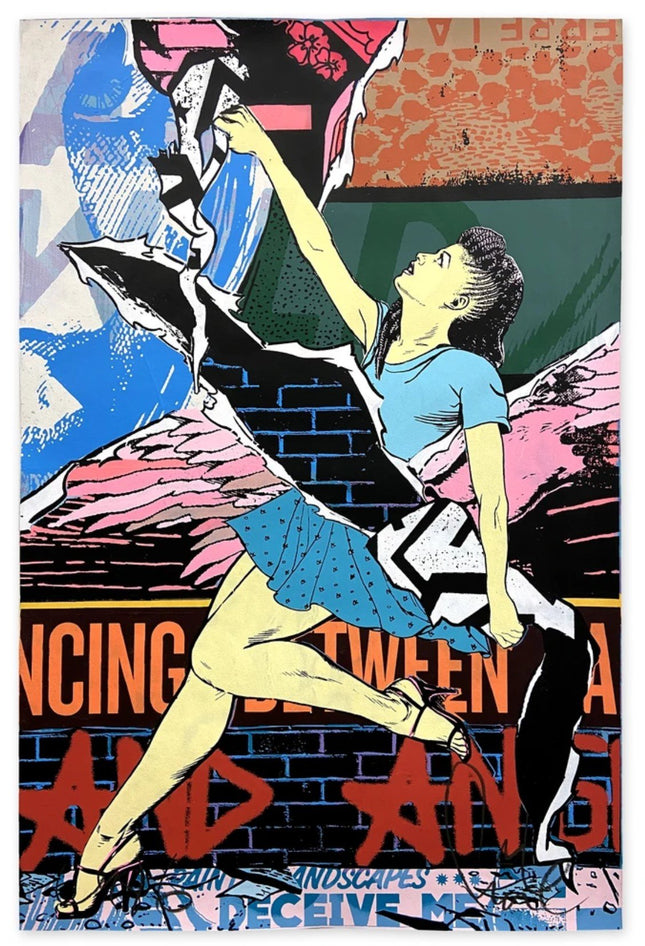
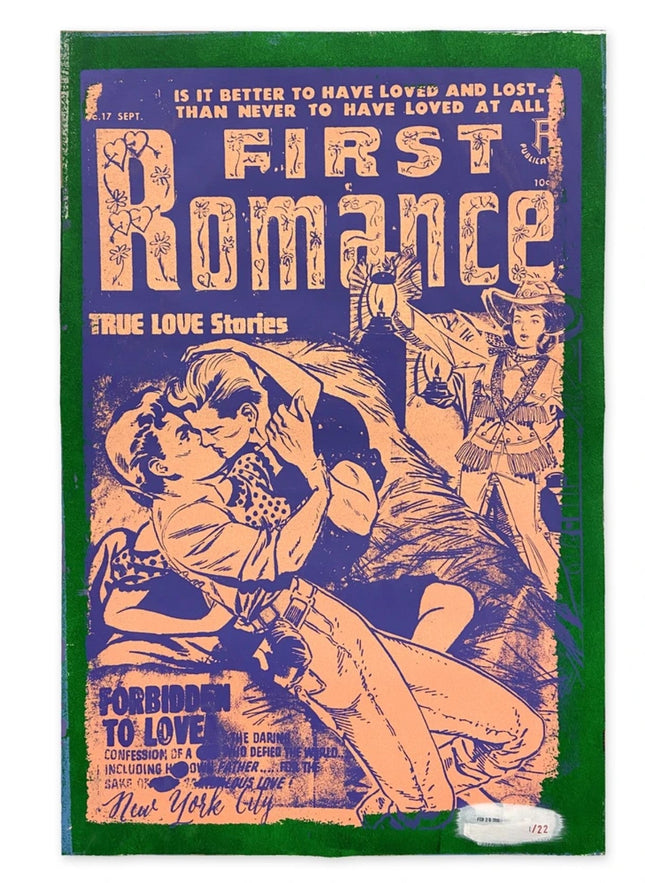
Faile Dancing Between Angels/ Love Stories B-Side Silkscreen Print by Faile
I am dancing Between Angels/ Love Stories B-Side HPM 24-Color Hand-Pulled Limited Edition Silkscreen Print With Acrylic, Silkscreen Ink, and Spraypaint on Deckled 310 gsm Coventry Rag by Faile Rare Street Art Famous Pop Artwork Artist. 2020 Signed & Numbered Limited Edition Dancing Between Angels / Love Stories B-Side 28 x 40 inches Hand-Painted Varied Edition of 22 Acrylic, Silkscreen Ink and Spraypaint Coventry Rag 320gsm Signed, Stamped and Embossed "The title of this image comes from a line in the poem, "Painted Landscapes Deceive Me -- Dancing Between Angels and Angles". This was a reference to Marie Antoinette arriving in Strasbourg when she first became queen and the faux painted landscapes placed outside her window, created to make her feel welcome. A further reference to De Stijl and Aubette Dance Hall with the angled and rectilinear lines the movement was known for. Along with its proximity to the Cathedral and the angels that grace its walls. Bubbles sort of fly loosely and dance through space, somewhat the antithesis of what De Stijl conveyed but a nice reference to movement. We liked the idea of the girl tearing away the perceptions built up around her while trying not to lose herself." -Faile Artistic Narratives in Motion: The Tale of "Dancing Between Angels/Love Stories B-Side" by Faile "Dancing Between Angels/Love Stories B-Side," a compelling artwork by the artist collective Faile, is a testament to the intricate layering and storytelling inherent in street pop art & graffiti artwork. This limited edition piece, a hand-painted varied edition of 22, is a 24-color hand-pulled silkscreen print embellished with acrylic, silkscreen ink, and spray paint on deckled 310 gsm Coventry Rag paper. Spanning 28 x 40 inches, each print is signed, stamped, and embossed and carries a unique narrative that intertwines historical references with a modern artistic lexicon. "The title of this image comes from a line in the poem, "Painted Landscapes Deceive Me -- Dancing Between Angels and Angles." This was a reference to Marie Antoinette arriving in Strasbourg when she first became queen and the faux painted landscapes placed outside her window, created to make her feel welcome. A further reference to De Stijl and Aubette Dance Hall with the angled and rectilinear lines the movement was known for. Its proximity to the Cathedral and the angels grace its walls. Bubbles fly loosely and dance through space, somewhat the antithesis of what De Stijl conveyed but a nice reference to movement. We liked the idea of the girl tearing away the perceptions built up around her while trying not to lose herself." -Faile. Deconstructing Historical Illusions: Faile's Interpretive Canvas The narrative behind "Dancing Between Angels/Love Stories B-Side" draws from a rich tapestry of historical and artistic references. Inspired by a poem, the title alludes to the deceptive pastoral landscapes presented to Marie Antoinette upon her arrival in Strasbourg, designed to create an illusion of welcome and grandeur. Faile extends this metaphor to explore the concepts of perception and self within the framework of pop and street art. The work visually explores tearing away layers of pretense, a spirited dance between reality and artifice. The piece also pays homage to De Stijl, a Dutch artistic movement emphasizing abstraction and geometric forms. The sharp angles and rectilinear lines characteristic of De Stijl are present in the artwork, juxtaposed with the organic forms of bubbles and the fluidity of the central figure. This contrast is a deliberate nod to movement and dynamism, challenging the rigidity of De Stijl with the fleeting dance of bubbles through space. Movement and Metaphor: Faile's Fusion of Dance and Art At the heart of Faile's creation is the depiction of a female figure caught tearing through the facades surrounding her. This act is literal and symbolic, a dance of liberation that reveals the layers beneath the surface. The figure's upward reach and poised legs evoke a sense of balletic grace, suggesting that tearing away deception is as elegant as forceful. The angels and architectural elements referenced in the artwork serve to anchor the piece within a broader historical narrative, connecting the transient nature of street art with the permanence of cultural heritage. Including these elements creates a dialogue between the past and the present, infusing the work with a sense of timelessness. Visual Poetry: The Rhythmic Allure of Faile's Work "Dancing Between Angels/Love Stories B-Side" is, in essence, a visual poem that speaks to the heart of street pop art & graffiti artwork. It is a dance of colors and forms, a rhythmic composition that transcends the confines of its medium. Faile's work captures the spirit of pop art's dialogue with popular culture, blending it with the subversive edge of street art to create something wholly new and deeply resonant. Each print of this limited edition is a narrative fragment, inviting viewers to engage with the artwork on multiple levels. The dance depicted in the print is not just physical; it is an emotional and psychological journey, a dance of the soul that mirrors the complexity and vibrancy of the human experience. In the diverse world of street pop art & graffiti artwork, "Dancing Between Angels/Love Stories B-Side" by Faile is a powerful expression of the genre's capacity for storytelling and emotional depth. It stands as a reminder that art can be a vehicle for examining our perceptions, tearing away the layers that obscure truth, and celebrating the liberating power of dance and movement.
$8,000.00
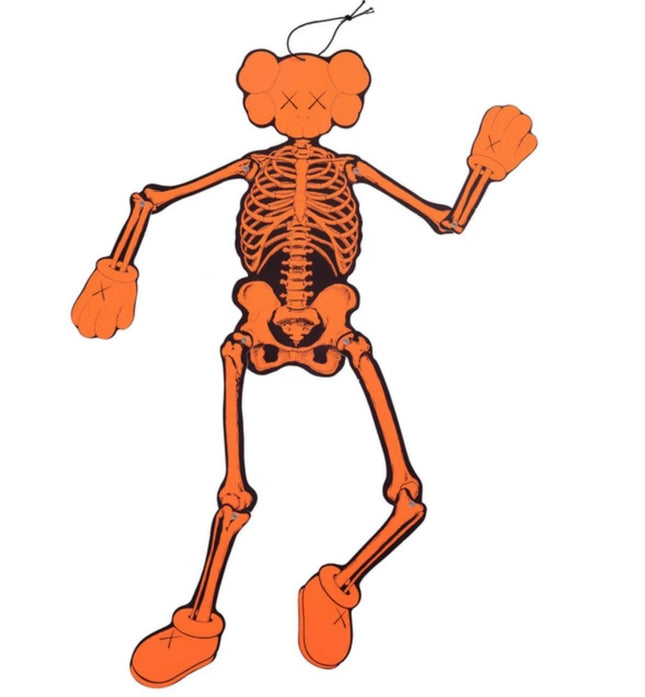
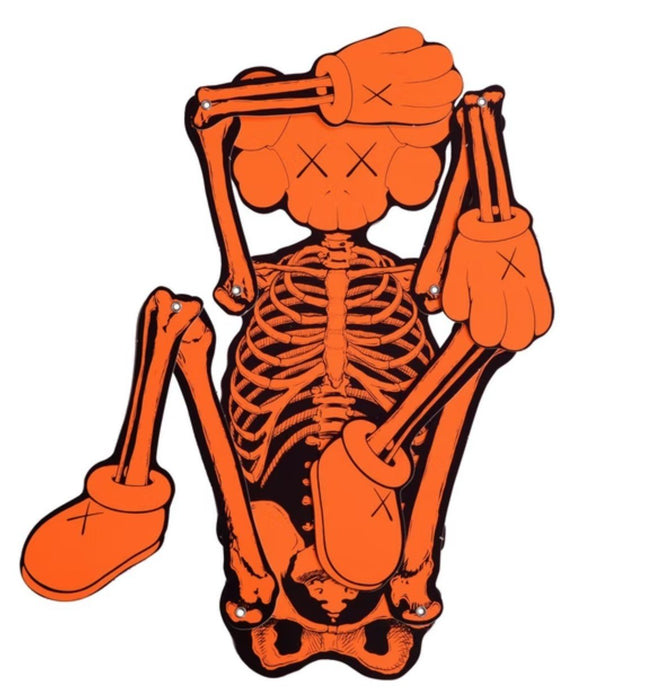
Kaws- Brian Donnelly Skeleton Board Cutout Ornament- Orange Giclee Print by Kaws- Brian Donnelly
Skeleton Board Cutout Ornament- Orange Pop Street Artwork Limited Edition Giclee Print on Articulated Paper Object by Urban Graffiti Modern Artist KAWS. 2021 Printed Moveable KAWS Skull 20x40 New in Original Packaging Exploration of Street Pop Art and graffiti Artwork through Articulated Paper Objects In the vibrant sphere of contemporary art, the amalgamation of street culture and pop art has led to the emergence of a distinctive style known as Street Pop Art. This style is a testament to the fluidity of art, as it transcends the traditional gallery spaces and melds into the urban landscape. Within this context, the "Skeleton Board Cutout Ornament- Orange Pop Street Artwork," a limited edition giclee print on articulated paper objects by the urban graffiti modern artist KAWS, gains significance. This piece is symbolic of the genre, capturing the essence of graffiti artwork with its bold lines and striking use of color. The orange hue, in particular, imparts a sense of vibrancy and is often associated with energy, creativity, and playfulness—attributes intrinsic to street pop art's ethos. The representation of the skeleton in this vibrant color disrupts the conventional association of such imagery with somber or macabre themes, instead injecting it with a sense of irreverence and contemporary edge characteristic of KAWS' artistic vision. KAWS: Synthesizing Commercial Imagery with Graffiti Artistry KAWS, an artist whose roots are firmly planted in the subcultures of skateboarding and graffiti, has become a quintessential figure in the Street Pop Art movement. The artist's work reflects the permeability between high and low culture, a concept expertly demonstrated in the "2021 Printed Moveable KAWS Skull 20x40." This title not only specifies the dimensions, reflecting the substantial presence of the artwork but also places it within a timeline, suggesting a continual evolution of the artist's thematic and stylistic concerns. The year 2021 serves as a chronological marker, possibly denoting the time of the artwork's conception or release. Within the art piece, the KAWS Skull is a recurring theme reimagined through various forms and media over the years. Here, it is rendered as an articulated paper object. This medium allows for movement and interaction, breaking down the barriers between the art and the observer. The movable nature of the skeleton invites the audience to engage with the piece on a tactile level, thus transforming the viewer from a passive spectator to an active participant. Articulated Paper in Street Pop Art Articulated paper art has a rich tradition that stretches back to puppetry and movable books, engaging the viewer with its kinetic potential. The choice of this medium by a modern urban graffiti artist such as KAWS is a nod to this tradition and an innovative vehicle for contemporary expression. The skeleton, a figure that can be traced back to historical memento mori, is recontextualized in this artwork to serve not as a reminder of death but as a playful commentary on the human experience. The term "Limited Edition Giclee Print" implies exclusivity and the utilization of advanced print technology to achieve high fidelity to the original. Giclee printing, known for its high-quality archival ink and sophisticated color accuracy, ensures that the vibrancy of the artwork is preserved. In the domain of street art and graffiti, the reproducibility of the artwork allows for a democratization of art ownership, making the once ephemeral nature of street graffiti into something that can be owned and cherished by art enthusiasts. The Color Orange in KAWS' Artwork The use of orange in this particular piece by KAWS is noteworthy. Color choice is never incidental, especially in pop art, where colors convey specific emotions and ideas. In the urban landscape, orange stands out; it is the color of caution signs, construction zones, and urban illumination. In the "Skeleton Board Cutout Ornament," orange could be seen as a deliberate choice to capture the viewer's attention, signal caution against daily life's mundanity, and celebrate the unorthodox. By creating a skeleton in such a vivid hue, KAWS transforms the archetype of death into a lively, approachable figure. This inversion of expectations is a hallmark of Street Pop Art, where juxtaposing disparate elements creates a new visual language. With its articulated limbs, the skeleton becomes not a static symbol but a dynamic, almost animated, presence within the space it occupies. In the broader context of KAWS' work, this piece is a continuation of the artist's exploration of humanity through figures that are at once universal and iconoclastic. The skeleton, stripped of individual characteristics, is a bare-bones representation of humanity. Yet, it is imbued with a distinct personality through its posture and the almost cartoonish exaggeration of its form. To engage with a piece like the "Skeleton Board Cutout Ornament- Orange Pop Street Artwork" is to participate in a dialogue that is at
$187.00





